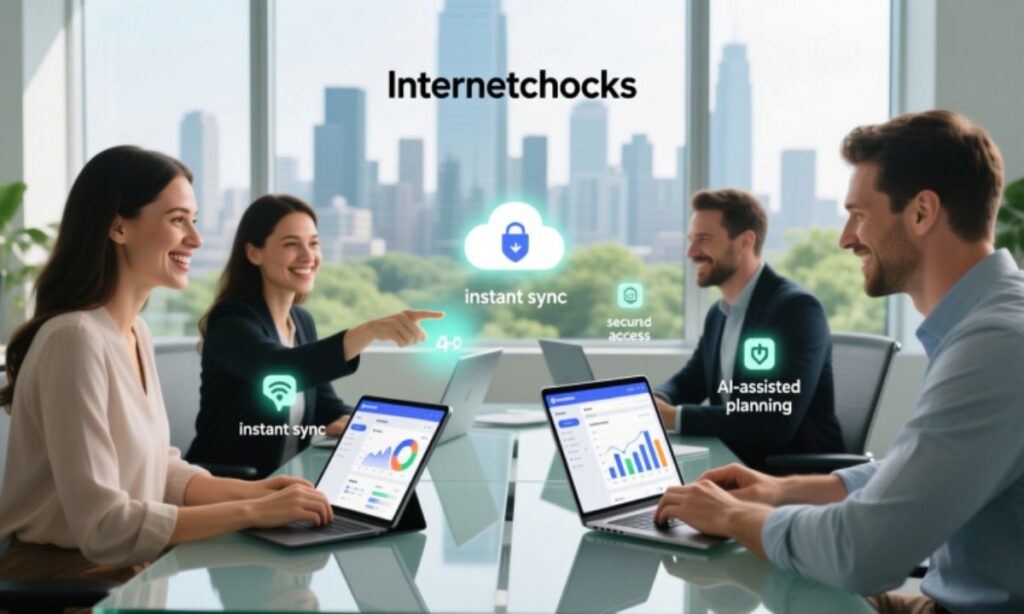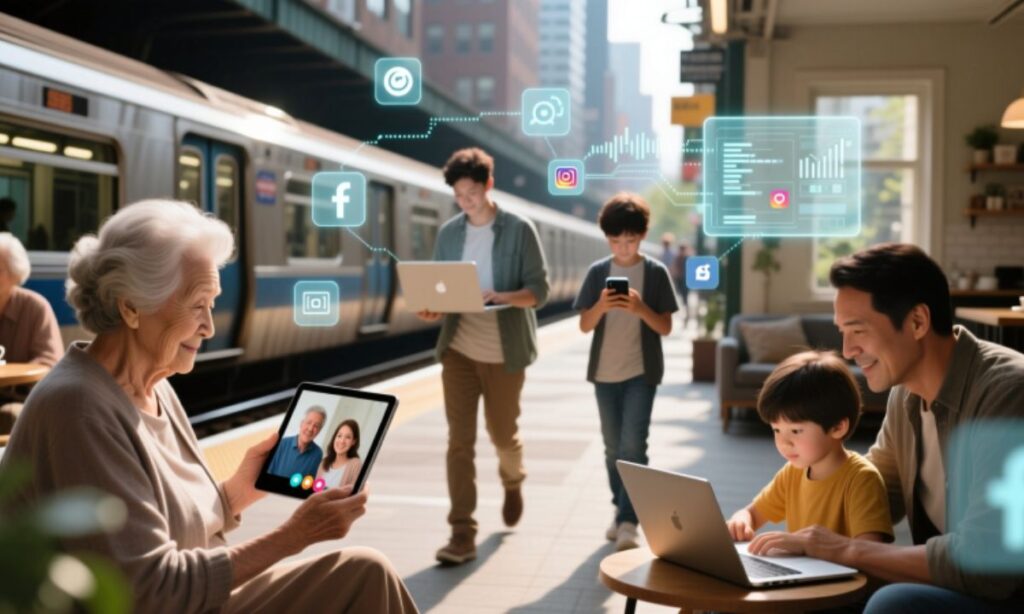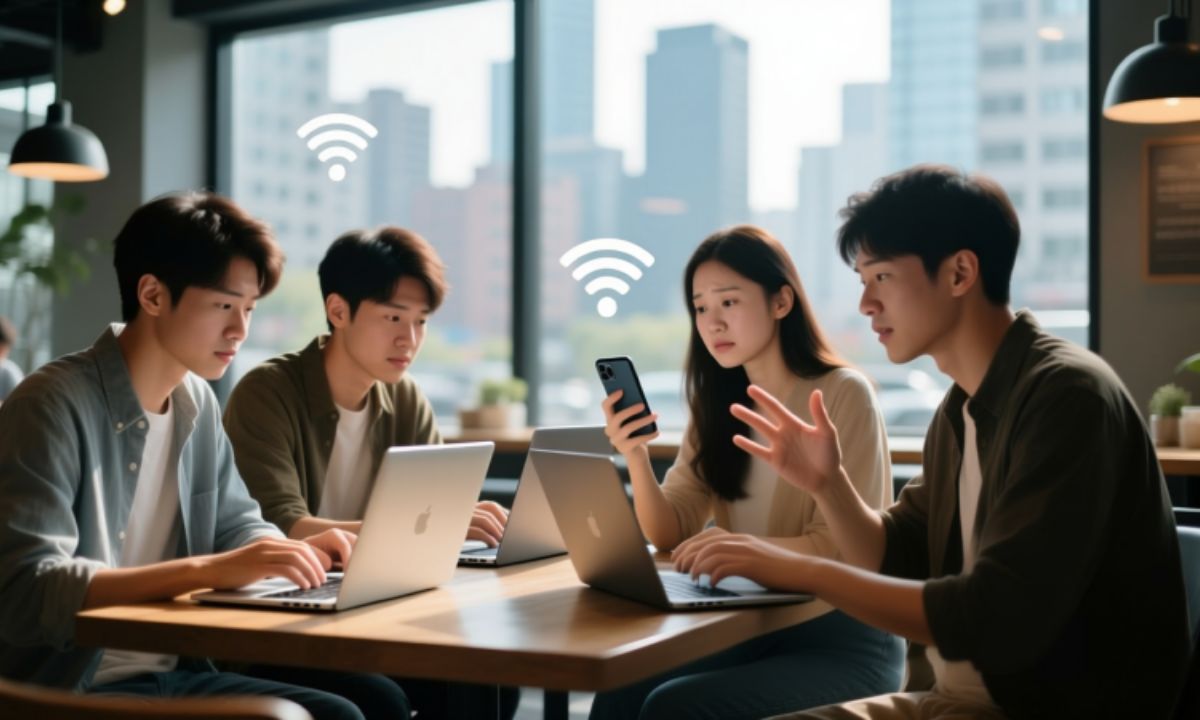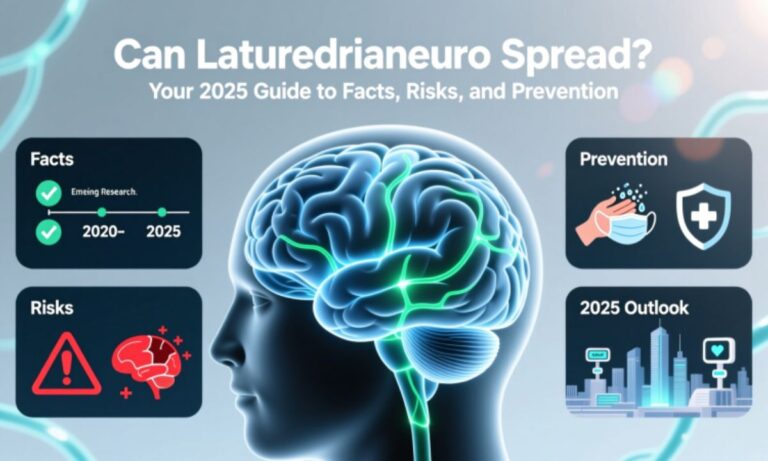internetchocks: The Impact of Online Communication and Connectivity
The way we talk and stay connected has changed with internet chocks. Online communication makes it easy to reach friends, family, and coworkers anytime. From quick messages to long video calls, distance no longer feels like a barrier. The internet has become a part of our daily routine.
But with this growth in connectivity come both benefits and challenges. We enjoy instant access to information, ideas, and new cultures. At the same time, issues like privacy, mental health, and screen time must be managed. Internetchocks highlights how powerful yet complex digital communication has become.
What is Internetchocks?
Internetchocks represents the profound impact of digital connectivity on modern human interaction and communication. This phenomenon describes how the internet creates both opportunities and challenges in our daily lives. The term encompasses everything from instant messaging to complex virtual communication systems. Online interaction has become an integral part of our existence, shaping how we work, learn, and maintain relationships.
The concept of internetchocks highlights the shock waves that internet usage sends through traditional social structures. These digital disruptions affect our mental health, relationships, and overall lifestyle. Understanding internetchocks helps us navigate the digital age more effectively. The phenomenon touches every aspect of modern life, from online shopping habits to professional remote communication.
Digital transformation continues to accelerate at an unprecedented pace. The rise of social media platforms and communication apps has fundamentally altered human behavior. Internetchocks examines both the positive and negative consequences of this shift. This comprehensive exploration helps individuals develop healthy tech habits and maintain digital balance in an increasingly connected world.
The Evolution of Communication and Connectivity

The journey from traditional mail to real-time communication represents one of humanity’s most significant transformations. Digital connectivity emerged gradually, beginning with basic email systems in the 1970s. These primitive networks laid the groundwork for today’s sophisticated digital communication tools. The evolution accelerated dramatically with the introduction of the World Wide Web in the 1990s.
Mobile connectivity revolutionized how people access information and connect with others. Smartphones transformed into powerful devices supporting video calls, instant messaging, and social networking. The proliferation of streaming services changed entertainment consumption patterns forever. Online collaboration tools enabled seamless teamwork across continents and time zones.
Communication apps evolved from simple text-based platforms to multimedia-rich experiences. Video calls became standard features rather than luxury options. The development of social media platforms created new paradigms for information sharing and community building. These platforms fostered global connections that transcended geographical boundaries and cultural barriers.
Early Digital Communication
The first digital communication tools were primarily text-based and limited in functionality. Email revolutionized business correspondence and personal communication. Bulletin board systems created early online communities where enthusiasts shared information. These primitive platforms established foundational principles for modern cyber culture and online interaction.
The Rise of Social Media
Social media platforms transformed online interaction into a mainstream activity. Facebook, Twitter, and Instagram created new ways for human connection online to flourish. These platforms introduced concepts like status updates, photo sharing, and real-time feeds. Social networking became a daily ritual for billions of users worldwide.
Mobile Revolution
Smartphones brought internet accessibility to previously underserved populations. Mobile connectivity enabled constant connection regardless of physical location. Apps optimized for touch interfaces made digital communication more intuitive and accessible. The mobile revolution democratized access to information sharing and online learning resources.
Benefits of Using Internetchocks

Digital connectivity offers remarkable advantages for personal and professional growth. Instant messaging enables immediate contact with friends, family, and colleagues worldwide. Online collaboration tools facilitate productivity and innovation across distributed teams. These technologies break down barriers that once limited human potential and opportunity.
Remote communication capabilities have transformed the modern workplace fundamentally. Employees can work from anywhere with reliable internet accessibility. Video calls provide face-to-face interaction without physical presence requirements. This flexibility improves work-life balance and reduces commuting-related stress and expenses.
Online learning platforms democratize education and skill development opportunities. Students access world-class instructors and resources regardless of geographic location. Information sharing happens instantaneously, accelerating research and knowledge dissemination. Digital transformation enables innovation at speeds previously thought impossible.
| Benefit Category | Key Advantages | Impact Level |
| Communication | Instant global connectivity | Very High |
| Education | Accessible learning resources | High |
| Business | Remote work capabilities | Very High |
| Entertainment | Diverse streaming options | Medium |
| Healthcare | Telemedicine services | High |
Enhanced Global Communication
Global connections foster understanding between diverse cultures and communities. Cross-cultural communication becomes effortless through translation tools and social media platforms. People form meaningful virtual relationships with individuals they might never meet physically. This connectivity promotes empathy, tolerance, and international cooperation.
Economic Opportunities
Online shopping habits have created entirely new business models and markets. E-commerce platforms connect sellers with global customer bases efficiently. Freelancing platforms enable individuals to monetize skills and services worldwide. Digital transformation generates employment opportunities that didn’t exist a decade ago.
Access to Information
The internet provides unprecedented access to knowledge and educational resources. Research that once required library visits now happens instantly online. Information sharing accelerates scientific discovery and technological innovation significantly. This democratization of knowledge empowers individuals to learn and grow continuously.
The Pros and Cons of Online Communication and Connectivity
Digital communication tools present both opportunities and challenges for modern society. Online interaction enables connections that enrich lives and expand horizons considerably. However, excessive screen time effects can negatively impact physical and mental health. Balancing these competing factors requires conscious effort and digital mindfulness.
Virtual communication lacks the nuanced body language present in face-to-face interactions. Text-based messages often lead to misunderstandings and misinterpretations of intent. Video calls partially address this limitation but cannot fully replicate in-person presence. The convenience of instant messaging sometimes encourages rushed, thoughtless responses.
Social media platforms create spaces for community building and social connection. These same platforms can become breeding grounds for misinformation and negativity. Online communities provide support networks for people facing similar challenges worldwide. However, these spaces sometimes foster echo chambers that reinforce existing beliefs uncritically.
Advantages of Digital Connectivity
- Instant messaging enables immediate communication across any distance efficiently
- Video calls maintain personal connections despite physical separation
- Online collaboration facilitates teamwork without geographical constraints
- Social networking helps maintain relationships with large networks of people
- Information sharing accelerates learning and knowledge dissemination globally
- Remote communication reduces travel costs and environmental impact significantly
- Digital communication tools accommodate different communication styles and preferences
Disadvantages of Digital Life
- Digital overload causes stress, anxiety, and decreased productivity
- Screen time effects include eye strain, poor posture, and sleep disruption
- Internet privacy concerns threaten personal data protection and security
- Technology addiction leads to compulsive behaviors and internet dependence
- Virtual relationships sometimes lack the depth of in-person connections
- Online risks include cyberbullying, scams, and identity theft
- Digital boundaries become blurred, making disconnection difficult
Impact on Communication Quality
Online interaction fundamentally changes how people express themselves and interpret messages. Written communication dominates digital communication, potentially diminishing conversational skills. The absence of vocal tone and facial expressions increases misunderstanding risks. Real-time communication expectations create pressure for immediate responses constantly.
How the Internet has Changed Our Lives

The internet revolutionized virtually every aspect of modern human existence profoundly. Digital lifestyle choices now define daily routines, leisure activities, and work habits. Internet usage patterns influence everything from shopping behaviors to entertainment preferences. This transformation happened gradually but now permeates nearly every life dimension.
Online shopping habits have fundamentally altered retail landscapes and consumer expectations worldwide. People purchase everything from groceries to automobiles through digital platforms conveniently. Streaming services replaced traditional television viewing patterns and physical media collections. Entertainment consumption became personalized, on-demand, and accessible from multiple devices simultaneously.
Social media platforms changed how people maintain relationships and share life experiences. Personal milestones get broadcast to hundreds or thousands of connections instantly. Online identity construction became a crucial aspect of self-presentation and reputation management. Cyber culture developed its own norms, language, and behavioral expectations.
Workplace Transformation
Remote communication technologies enabled entirely new work arrangements and career possibilities. The traditional office became optional for many professional roles and industries. Online collaboration tools facilitated seamless teamwork across continents and time zones effectively. Digital transformation accelerated dramatically during global events requiring physical distancing measures.
Education Revolution
Online learning platforms democratized access to quality education and skill development. Students attend virtual classrooms from anywhere with reliable internet accessibility. Educational content became available on-demand, allowing self-paced learning tailored to individual needs. Information sharing between educators and learners transcended traditional geographical limitations completely.
Social Interactions
Human connection online supplemented and sometimes replaced face-to-face social interactions significantly. Virtual relationships formed through gaming, forums, and social networking sites. Online communities provided belonging and support for people with niche interests. Social connection patterns evolved to incorporate both digital and physical interaction seamlessly.
| Life Area | Before Internet | After Internet | Impact |
| Shopping | Physical stores only | Online shopping habits dominate | Revolutionary |
| Entertainment | Scheduled broadcasts | Streaming services on-demand | Transformative |
| Communication | Letters and phones | Instant messaging and video calls | Complete shift |
| Education | Classroom-based | Online learning accessible | Democratized |
| Work | Office-required | Remote communication enabled | Flexible |
The Effects on Mental Health and Well-being

Digital connectivity profoundly impacts mental well-being in complex, multifaceted ways. Social media platforms create comparison cultures that affect self-esteem and body image. Constant online interaction can lead to feelings of inadequacy and isolation. The pressure to maintain an attractive online identity generates anxiety and stress.
Screen time effects extend beyond physical health to influence psychological wellness significantly. Excessive internet usage correlates with increased rates of depression and anxiety disorders. Technology addiction manifests through compulsive checking behaviors and withdrawal symptoms when offline. Digital overload overwhelms cognitive processing capabilities, leading to mental fatigue and burnout.
However, digital communication tools also provide crucial online support systems for struggling individuals. Mental health impact isn’t uniformly negative; technology enables access to therapeutic resources. Virtual communication helps people connect with counselors, support groups, and educational materials. Online communities reduce isolation for those dealing with stigmatized conditions or circumstances.
Positive Mental Health Impacts
Online support systems provide valuable resources for people managing mental health challenges. Access to information about mental well-being empowers individuals to seek appropriate help. Virtual relationships offer companionship to those who struggle with in-person social interaction. Social networking maintains connections that combat loneliness and social isolation effectively.
Negative Psychological Effects
Social media platforms foster unhealthy comparison and fear of missing out (FOMO). Digital overload reduces attention spans and increases stress levels measurably. Technology addiction disrupts sleep patterns, relationships, and overall life satisfaction significantly. Internet dependence creates anxiety when access becomes unavailable or restricted temporarily.
The Comparison Trap
Online identity curation presents idealized versions of reality that distort perceptions. People compare their behind-the-scenes reality to others’ highlight reels constantly. This comparison culture negatively affects emotional well-being online and self-worth perception. Social media platforms amplify insecurities and create unrealistic lifestyle expectations subconsciously.
Finding a Balance: Tips for Using the Internet Responsibly
Responsible internet use requires conscious effort and intentional boundary setting practices. Digital mindfulness helps individuals maintain healthy relationships with technology and digital communication tools. Establishing clear digital boundaries protects mental well-being and preserves meaningful human connection online. Balance doesn’t mean abandoning technology but using it purposefully and mindfully.
Healthy tech habits begin with awareness of current internet usage patterns and behaviors. Tracking screen time effects helps identify problematic areas requiring adjustment and intervention. Setting specific times for online interaction prevents technology from dominating every waking moment. Creating phone-free zones and times strengthens in-person relationships and social connection.
Digital balance involves curating online communities and social media platforms that support wellbeing. Unfollowing accounts that trigger negative emotions or unhealthy comparisons improves mental health impact. Engaging with online support systems and positive content enhances rather than diminishes wellness. Internet accessibility should enhance life quality rather than detract from it consistently.
Practical Strategies for Balance
- Establish specific screen time limits for recreational internet usage daily
- Create technology-free zones in bedrooms to improve sleep quality
- Practice digital mindfulness by intentionally choosing when to engage online
- Curate social media platforms to include only positive, supportive content
- Schedule regular digital detox periods to reset relationship with technology
- Prioritize in-person interactions over virtual communication when possible
- Use communication apps purposefully rather than compulsively checking constantly
- Set digital boundaries around work hours to maintain work-life separation
- Engage in offline hobbies that don’t involve mobile connectivity regularly
- Practice gratitude instead of comparison when viewing online content
Protecting Mental Well-being
Emotional well-being online requires conscious curation of digital experiences and content. Recognizing triggers that negatively affect mental health enables proactive boundary setting. Taking breaks from social networking when feeling overwhelmed prevents digital overload accumulation. Seeking professional support when technology addiction interferes with functioning shows strength and wisdom.
Building Healthy Digital Habits
Responsible internet use develops through consistent practice and intentional habit formation. Starting small with manageable changes increases success likelihood significantly compared to drastic overhauls. Digital transformation in personal life should prioritize wellbeing over constant connectivity. Healthy tech habits become sustainable when aligned with personal values and priorities.
Frequently Asked Questions
What exactly is internetchocks and why does it matter?
Internetchocks describes the profound impact of digital connectivity on modern life, affecting communication, relationships, and mental well-being significantly.
How much screen time is considered healthy?
Experts recommend limiting recreational screen time to 2 hours daily, though optimal amounts vary based on individual circumstances and internet usage purposes.
Can social media really affect mental health?
Yes, social media platforms significantly influence mental health impact through comparison culture, digital overload, and effects on self-esteem and emotional well-being online.
What are signs of internet addiction?
Technology addiction signs include compulsive checking, anxiety when offline, neglecting responsibilities, and internet dependence interfering with daily functioning and relationships.
How can I reduce my digital footprint?
Improve internet privacy through strong passwords, limiting information sharing, reviewing personal data protection settings, and being mindful of online identity presentation.
Conclusion
Internetchocks shows us how online communication has reshaped the way we live and connect. It gives us the power to share ideas instantly, stay close to loved ones, and build relationships across the world. From social media to video calls, digital connectivity keeps us linked in real time. But it also reminds us of the risks that come with too much screen time, loss of privacy, and emotional stress. Balancing these sides is the real challenge of our digital age.
As we move forward, the key lies in using the internet with awareness and purpose. Responsible use of internetchocks can enhance mental well-being, improve collaboration, and bring people closer than ever. By setting healthy boundaries, we can enjoy the benefits of technology without losing touch with real-life moments. The future of communication is already here our choice is to make it meaningful, balanced, and truly human.







